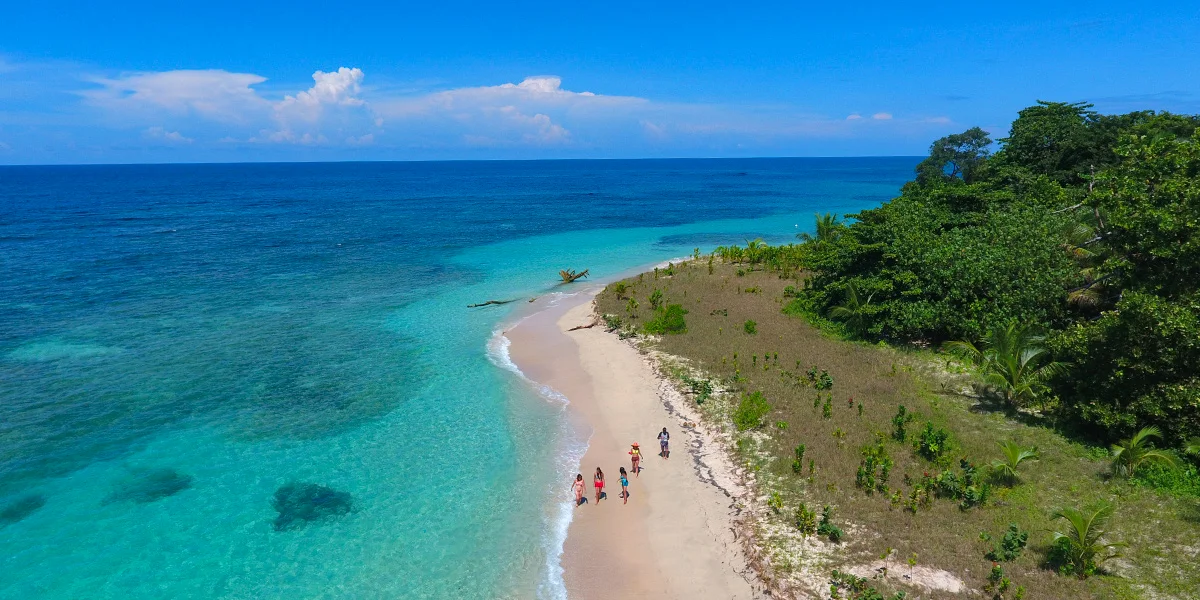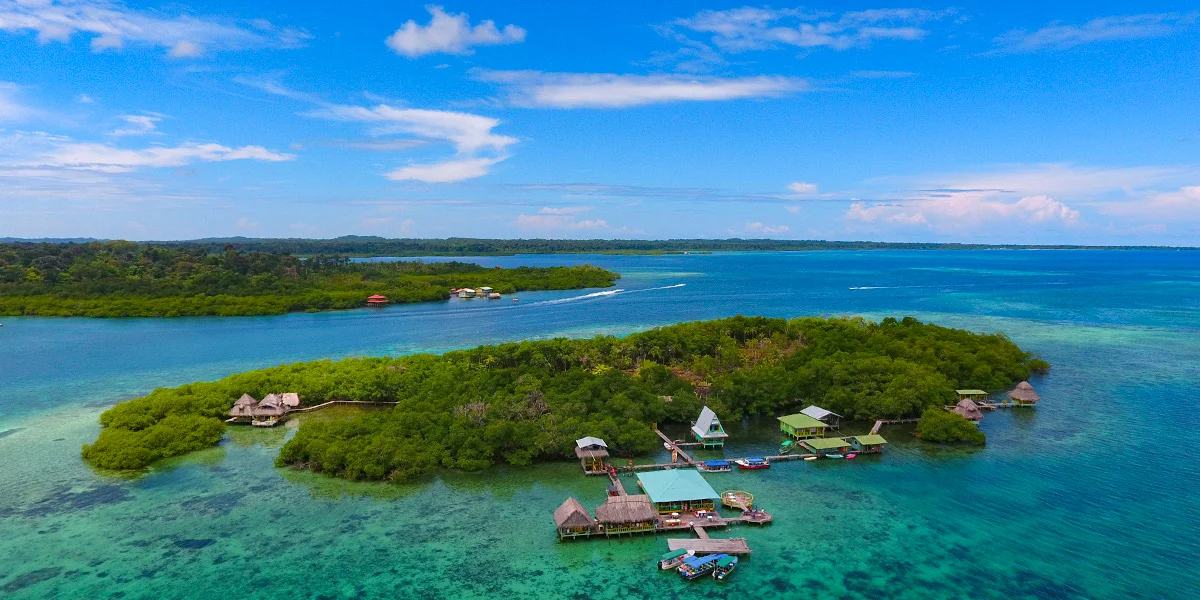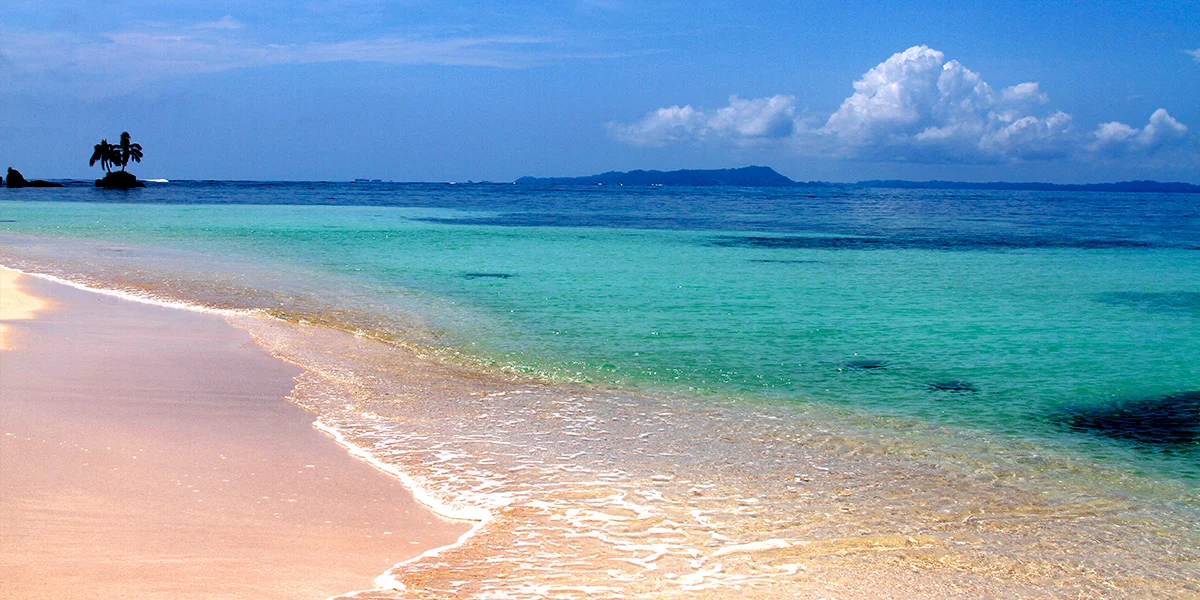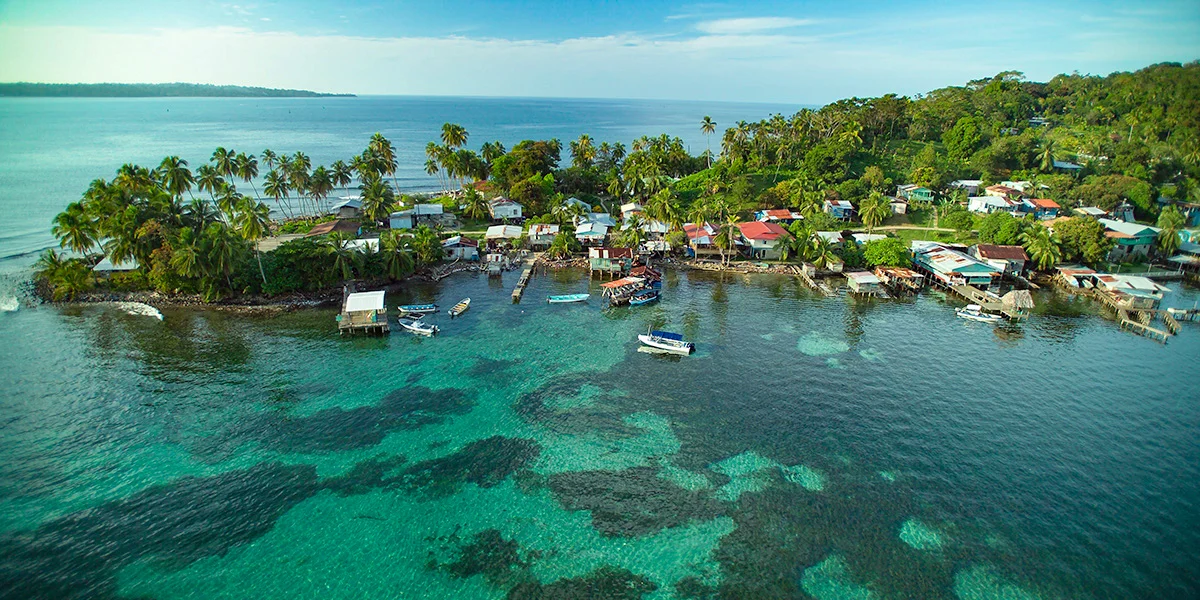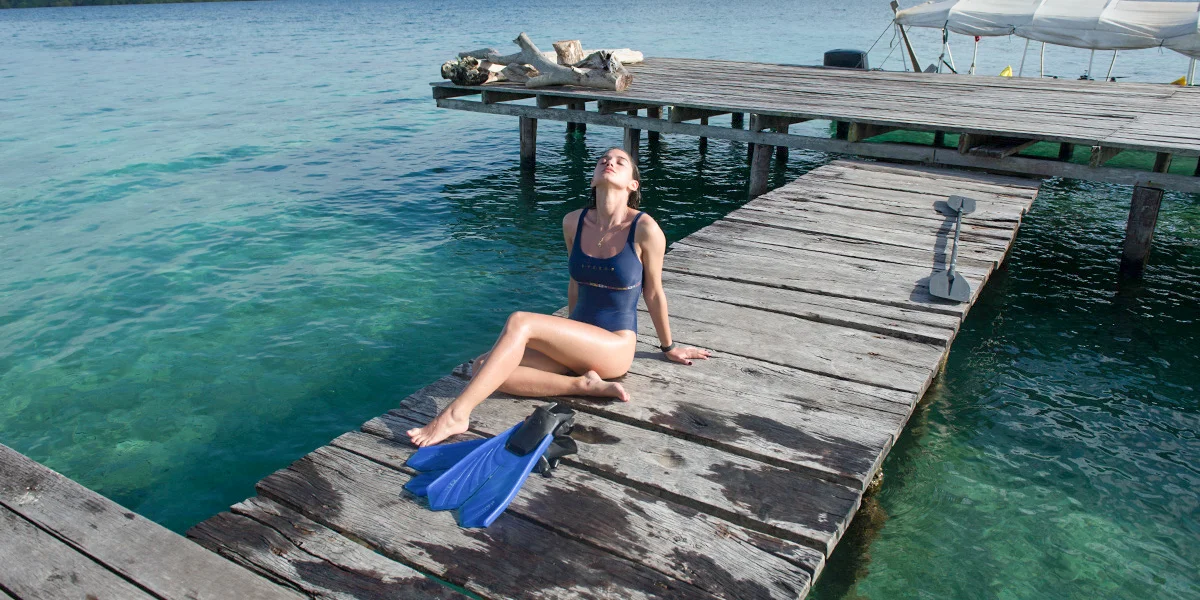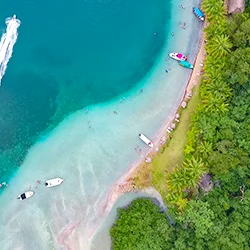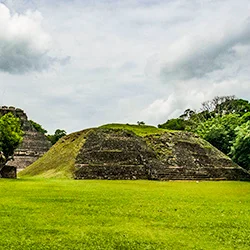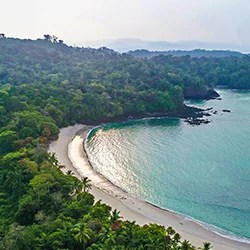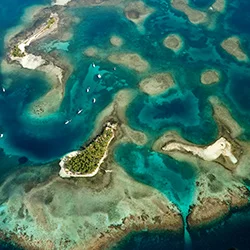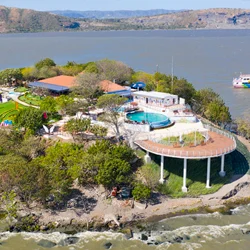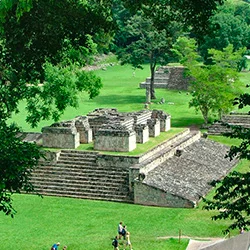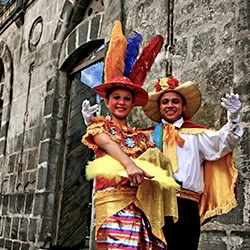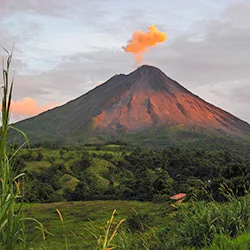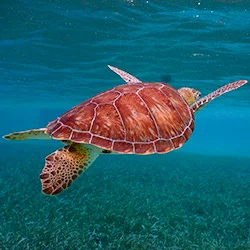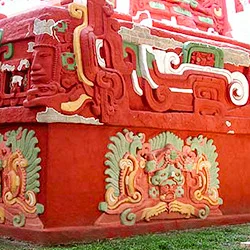Zapatillas Cays is a group of two uninhabited islands, surrounded by a coral reef, located east of Bastimentos Island, in the Bocas del Toro archipelago, in the province bearing the same name. North Zapatilla Cay is 14 hectares, while to the south, the other Zapatilla Cay is comparatively larger, with 34 hectares. Both islands are within the boundaries of the Bastimentos Island Marine National Park, north of Cayo Agua and Isla Popa.
On the islands, within the Bastimentos Marine Park, you can practice fishing and diving in its spectacular coral reefs, and its crystalline waters. These mangrove islands with fine white sand, palm and coconut trees around each cay, and reefs full of marine life, are a paradise of biodiversity. From March to September, on the west side of the island you can observe the migration of turtles that come to lay their eggs on these beaches. The local legend is that the islands were formed when God stepped on earth, and that is why the islands have the shape of his shoes.
GEOPOSITION
OTROS LUGARES DE INTERÉS QUE TE PUEDEN INTERESAR
Manuel Antonio National Park and its Beaches
Guna Yala Archipelago (San Blas)
Love Island
OTRAS FORMAS DE VIVIR CENTROAMÉRICA
TOURS RECOMENDADOS
Relaxation and culture in Central America
Move across the streets of La Antigua Guatemala, take the Route of the Flowers, and visit Joya de Cerén and Copán, through this 9-day tour.
Fast Central America
Enjoy Nicaragua and Costa Rica in this tour that will take you to Managua, León, Granada, Monteverde, and La Fortuna, among other great places.
Costa Rica – Nicaragua: Forests, Volcanoes and Colonial Cities
Hike through the forest, fly through the trees, visit impressive colonial cities, and admire active volcanoes...feel a thousand sensations
Must see Guatemala & Belize
Cultural visits, discovering the ancient Maya heritage, and snorkeling are just some of the adventures offered by this amazing tour.
Mesoamerican highlights
Discover the heritage of the colonial cities, the National Parks, and the pre-Columbian ruins of Copán in Nicaragua, Honduras, and Guatemala.
